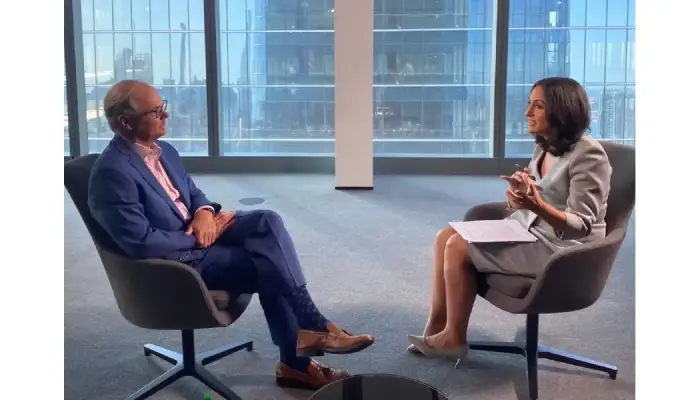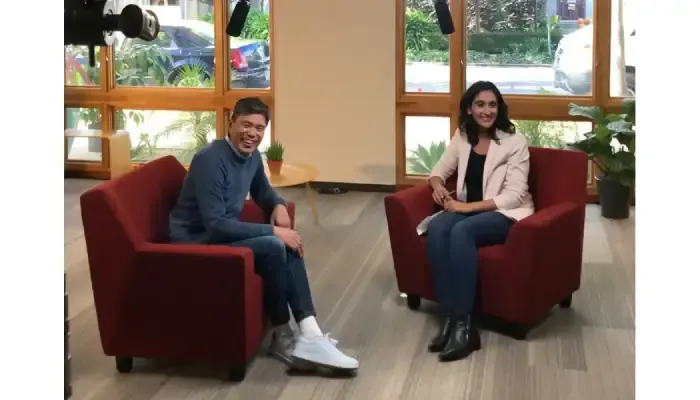Preparing for a TV journalist interview requires careful planning to communicate your message clearly and confidently. Start by responding quickly to interview requests and confirm all details such as the reporter’s name, format, and deadline. Next, focus on just two or three key messages you want to share and think through possible questions, especially tough ones. Keep your answers short and simple, avoiding jargon so viewers easily understand you. Practice speaking aloud to sound natural during the interview. Dress professionally in solid colors and maintain good eye contact with the journalist, not the camera, to build a genuine connection. Staying calm and clear helps ensure your message is heard without misunderstandings.
Understanding the Role of a TV Journalist Interview
A TV journalist interview offers a unique opportunity to share your message directly with a wide and diverse audience through a trusted source. It provides a clear channel to explain your views, work, or organization in your own words, which can strongly influence how the public perceives your topic or cause. Because TV interviews often reach people from various backgrounds, it’s important to keep your messages simple and accessible to ensure broad understanding. Knowing the context of the interview and the journalist’s style helps you tailor your answers and anticipate the types of questions you might face. Your tone and demeanor during the interview play a critical role in how your message is received and remembered. Calm, confident delivery builds credibility and trust. These interviews can either strengthen or harm your reputation, depending on your preparation and how you come across on camera. They also offer a chance to correct misinformation and provide fresh insights on important issues. By approaching the interview as an opportunity to position yourself as an expert or reliable source, you can make a meaningful impact beyond just the immediate conversation.

Responding Quickly and Confirming Interview Details
Replying promptly to interview requests shows respect for journalists’ tight schedules and helps establish a professional relationship from the start. When you respond, ask for the reporter’s full name and the media outlet to understand who your audience will be. Clarify the interview format, whether it’s live, recorded, phone, or in-person, so you can prepare accordingly. Confirm the expected length and timing of the interview to manage your own schedule effectively. It’s important to verify if the interview will focus on specific topics or a broader discussion, allowing you to tailor your preparation. Check if you are the right person for the interview or if someone else should participate, which can save time and improve the interview’s relevance. Don’t hesitate to ask about the journalist’s background or previous work to get a sense of their style and approach. If the interview involves visual elements or props, find out in advance so you can arrange them properly. Confirm the exact location or call details to avoid any last-minute confusion. Finally, set clear expectations about follow-up communication in case additional information is needed after the interview. These steps ensure you start the process organized and confident.
Crafting Clear and Focused Key Messages
When preparing for a TV journalist interview, identify 2 to 3 main points you want the audience to remember. Keeping your messages simple and free of jargon helps ensure they reach a wide audience without confusion. Use relatable examples or short stories to make your points more engaging and easier to understand. Frame your messages positively, even when discussing tough topics, to maintain a constructive tone. It’s important that your key messages align with your organization’s goals and values so your communication feels consistent and credible. Throughout the interview, naturally repeat your main points to reinforce them, and prepare short, memorable phrases or sound bites to make your messages stick. Avoid overloading your answers with too many details, focus on clarity and impact. Also, anticipate questions that might challenge your messages and have clear, honest responses ready. Practicing your delivery will help you sound confident and conversational, making your key messages more effective on camera.
Practicing Answers to Build Confidence
Reviewing potential questions, especially those that might be challenging or sensitive, is essential for preparation. Practice answering aloud to develop a natural and confident delivery, rather than memorizing responses word-for-word. Recording yourself can help identify areas for improvement, such as tone, pace, and body language. It’s also useful to rehearse with a colleague or coach who can offer constructive feedback. During practice, focus on staying calm and composed, even when facing unexpected questions. Develop strategies to bridge back to your key messages smoothly. Keep answers concise, aiming for about eight seconds to fit typical TV sound bites. Prepare polite ways to say you need more time to think or cannot answer certain questions without sounding evasive. Regular practice reduces nervousness and builds familiarity with your material, helping you appear more relaxed and authoritative during the actual interview.
Using Effective Communication During the Interview
Speaking clearly and at a steady, moderate pace helps ensure your message is understood by both the journalist and the audience. Keep your answers brief and focused, avoiding long explanations that can lose attention. Repeating important points in different ways makes your key messages stick. Maintain eye contact with the journalist to build trust and connection, which also shows confidence. Avoid using negative words or repeating negative phrases introduced by the reporter, as this can reinforce unfavorable impressions. If you don’t know the answer to a question, it’s better to admit you’ll follow up later rather than guessing and risking misinformation. Phrases like “off the record” or “no comment” can seem evasive, so it’s best to avoid them. Stay composed, even if questions feel challenging, and avoid reacting emotionally or defensively. Your body language should be positive and match what you’re saying, reinforcing your message. Finally, listen carefully to each question before responding to prevent misunderstandings and respond appropriately.
Maintaining Professional On-Camera Presence
Dressing appropriately is key to maintaining a professional on-camera presence. Opt for solid, dark-colored clothing such as navy or blue, which helps avoid distractions and looks good on camera. Avoid white, bright colors, or busy patterns, as these can interfere with how you appear on screen. Also, make sure your clothes are free of logos or slogans that might divert attention from your message. Grooming should be neat and understated: keep your hair tidy, wear minimal jewelry, and if you use makeup, aim for a natural look. When seated, maintain good posture to convey confidence and calmness. Pay attention to your facial expressions; a slight smile can create warmth and approachability without seeming forced. During the interview, focus your gaze on the reporter rather than directly into the camera, which fosters a natural conversation feel. Before the interview starts, check the background to ensure it looks professional and uncluttered. Avoid fidgeting or unnecessary movements, as these can distract viewers from your words. Finally, arrive early to allow time for the crew to adjust lighting and sound, and cooperate with their setup to ensure the best possible visual and audio quality.
- Choose solid, dark-colored clothing such as navy or blue to avoid distractions.
- Avoid white, bright colors, or busy patterns that can interfere with the camera.
- Ensure clothing is free of logos or slogans that may confuse the message.
- Take care with grooming: neat hair, minimal jewelry, and natural makeup if used.
- Sit comfortably with good posture to appear confident and relaxed.
- Be aware of your facial expressions; a slight smile can convey warmth.
- Look at the reporter, not directly into the camera, for a natural interaction.
- Check the background setting for professionalism and minimal clutter.
- Avoid fidgeting or unnecessary movements that can distract viewers.
- Prepare for lighting and sound set-up by arriving early and cooperating with crew.
Managing the Interview Environment Carefully
Whenever possible, choose face-to-face interviews as they allow for richer, more natural communication. Keep in mind that microphones might be recording even during casual moments, so it’s important to maintain a professional tone and behavior throughout the entire process, including informal chats or background footage. Pay attention to your surroundings by minimizing distractions such as noise, background activity, or interruptions that could disrupt the flow or distract viewers. Position yourself comfortably in front of the camera, but avoid slouching or adopting overly casual postures, as body language plays a key role in how your message is received. Before the interview starts, check technical details like camera angles, lighting, and sound levels to ensure a polished presentation. Also, be mindful of what appears behind you on the screen; a cluttered or inappropriate background can unintentionally send the wrong message. For remote interviews, verify your internet connection and device settings well in advance to prevent technical glitches. Inform colleagues or family members about your schedule to limit interruptions and maintain focus. Staying engaged and professional from preparation to the interview itself helps create a positive impression and supports clear communication.
Handling Challenging Questions and Situations
When facing tough questions during a TV journalist interview, it’s important not to accept or repeat the journalist’s assumptions or characterizations. Instead, respond with clear facts in your own words to keep control of the conversation. If a question is hypothetical or speculative, politely decline to answer to avoid misinterpretation. Should you feel misquoted or misunderstood, address your concerns calmly with the reporter rather than escalating immediately. Avoid demanding to see the story before it airs; however, it’s reasonable to ask if you can verify your quotes for accuracy. Maintain your composure even if questions seem aggressive or confrontational, and steer the discussion back to your key messages when appropriate. Refrain from using provocative language or sarcasm, as these can be easily taken the wrong way. If needed, offer to provide additional information or follow up after the interview to clarify points. Remember, interviews are not casual conversations but controlled exchanges with a clear purpose, so stay focused and professional throughout.
Following Up After the Interview for Clarity and Connection
After the interview, sending a thank-you note or email is a simple but effective way to keep a positive connection with the journalist. It shows appreciation for their time and keeps the door open for future interactions. Offering to provide additional information or clarify any points from the interview can also be helpful, especially if there were complex topics discussed. Once the interview is published or aired, review it carefully to evaluate your performance. This review helps identify areas where your messaging was strong and where you might improve, such as handling tough questions or simplifying explanations. Keeping copies or recordings of the interview allows you to reference your responses and get feedback over time. If the journalist reaches out with follow-up questions, respond promptly and professionally to maintain trust and credibility. Even if the coverage wasn’t entirely favorable, stay composed and avoid public complaints, as professionalism builds long-term respect. Building and maintaining a media contact list supports ongoing communication and opens doors for future opportunities. Using all feedback constructively will help you sharpen your preparation and delivery for the next interview, strengthening your overall media presence.
Benefits of Preparing for a TV Journalist Interview
Preparing for a TV journalist interview helps you deliver clear and consistent messages that build your credibility with viewers. When you take the time to get ready, you reduce the chance of being misunderstood or misquoted, which can harm your reputation. Being prepared also boosts your confidence, making it easier to stay calm and focused during the interview. It allows you to explain complex ideas in simple terms that a broad audience can understand, increasing the impact of your message. A well-prepared interview positions you as a knowledgeable and trustworthy expert, helping you stay in control of the conversation instead of being led off track. It also supports a professional appearance and demeanor on camera, which matters when you want to leave a positive impression. This positive impression can open doors for future media opportunities. Finally, thorough preparation ensures your key points are remembered by viewers and increase the chances they will take action based on your message.
Frequently Asked Questions
1. What key points should I focus on when preparing for a TV journalist interview?
Concentrate on understanding your main message, anticipating tough questions, practicing clear and concise answers, and being aware of your body language. Preparing examples or stories to support your points can also be very helpful.
2. How can I handle unexpected questions during a TV interview without losing composure?
Stay calm and take a moment to think before answering. If you don’t know the answer, it’s okay to say you’ll get back with more information. Keep your responses honest and steer the conversation back to your key messages when possible.
3. What role does appearance and body language play in a TV journalist interview?
Appearance and body language are important since they affect how your message is perceived. Dress appropriately for the setting, maintain good posture, make eye contact, and avoid distracting movements. These non-verbal cues help you appear confident and trustworthy.
4. How can I effectively prepare my talking points without sounding rehearsed in an interview?
Focus on understanding your main ideas instead of memorizing word-for-word scripts. Practice speaking naturally about your topics, using simple language and examples. This approach helps you stay authentic while clearly communicating your message.
5. What are the best strategies to manage nerves before and during a TV interview?
Deep breathing exercises, visualization of a positive outcome, and adequate preparation can reduce anxiety. During the interview, focus on the conversation rather than the camera, and remind yourself that it’s okay to pause briefly before answering to gather your thoughts.
TL;DR Preparing for a TV journalist interview involves quick and clear communication with the reporter, defining your key messages, and practicing your answers to stay confident. Dress professionally, maintain good on-camera presence, and manage the interview environment carefully. Be ready to handle tough or unexpected questions calmly and honestly. After the interview, follow up as needed and build a positive media relationship. Thorough preparation helps you deliver clear, trustworthy messages that enhance your credibility and make a strong public impact.
Resource URL:
https://en.wikipedia.org/wiki/Journalist

Mary Burns is a dedicated writer focusing on health and fitness topics. With a passion for promoting wellness and vitality, Mary shares her knowledge and expertise through engaging and informative blog posts.




